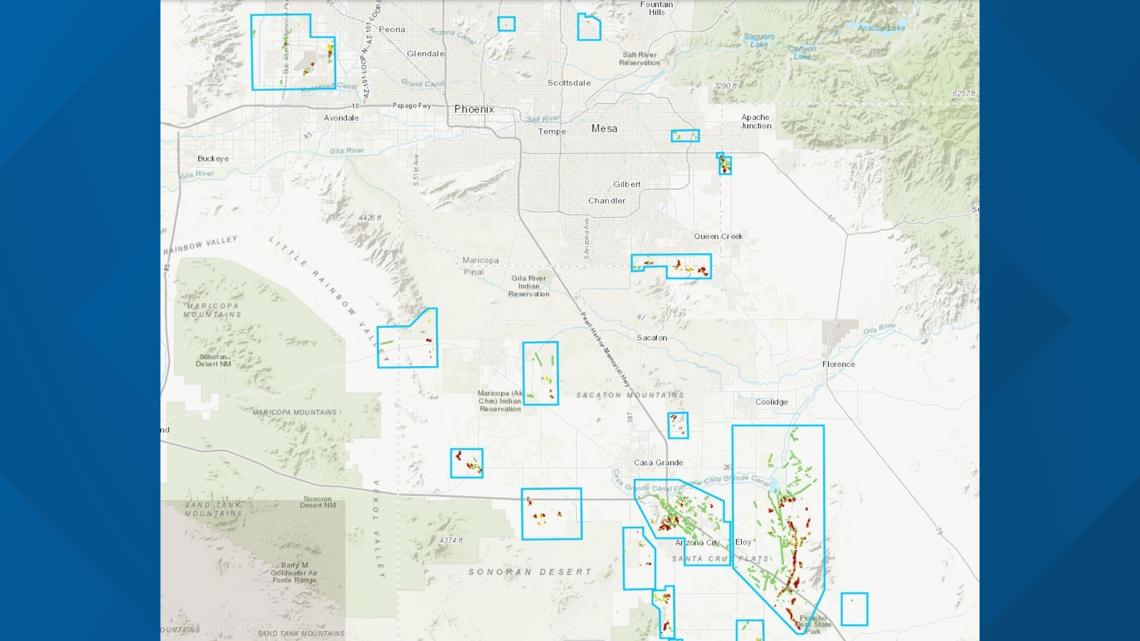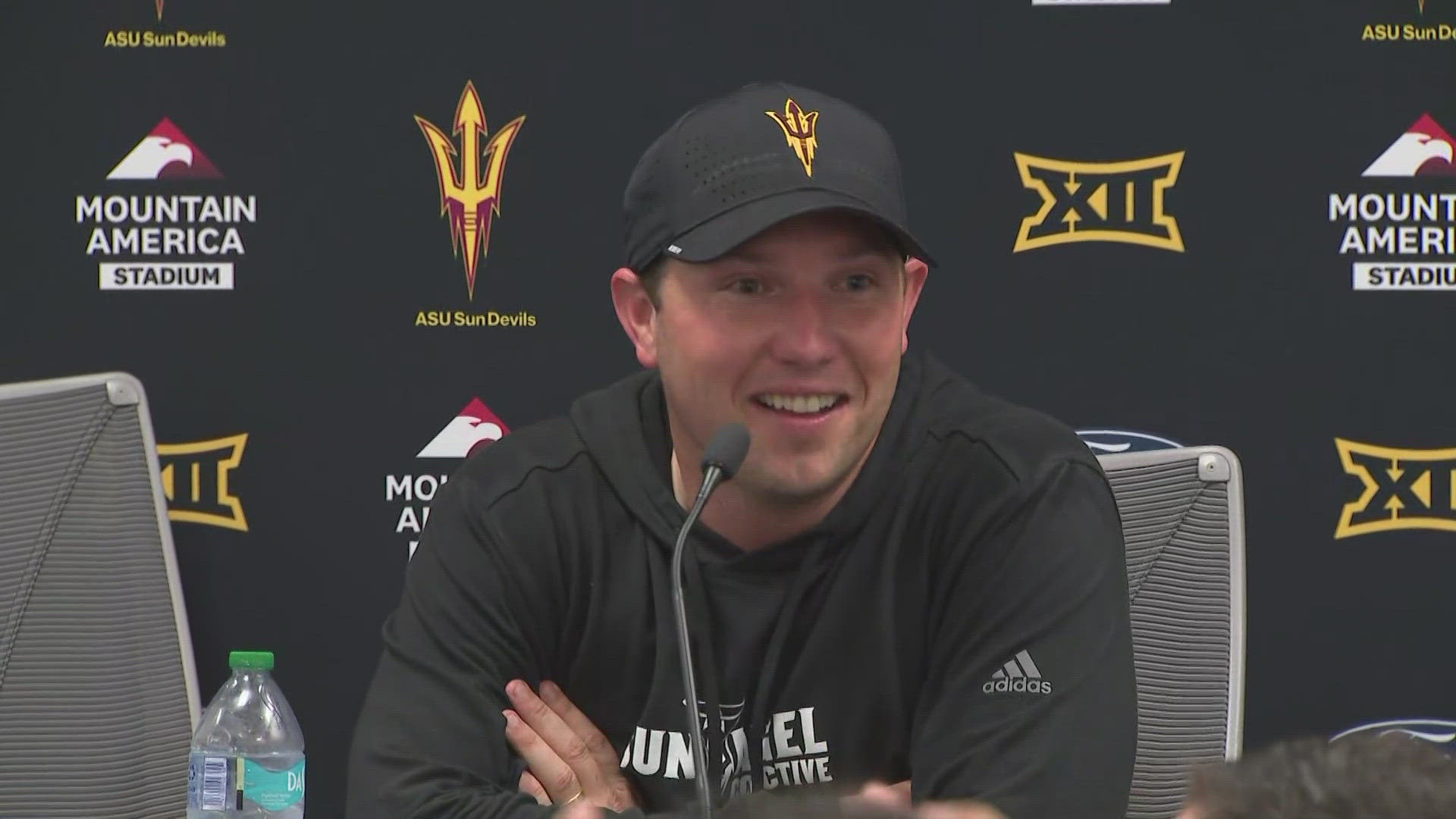PHOENIX — Luke Air Force Base, Arizona City, Queen Creek, Apache Junction.
These are all areas where cracks in the ground -- officially known as land fissures -- have opened up over time. Some are slim and narrow, and others have widened significantly through ongoing erosion.
It's a geological phenomenon that is uniquely linked to how Arizona has changed and developed over the last century. As more water has been pumped out of the ground, the more the land sinks and fissures start to appear.
"The land subsidence is driven by groundwater withdrawal, we've taken so much groundwater out of certain basins in Arizona that the surface has actually sunk in some places by about 20 feet over decades," said Joseph Cook, a research scientist with the Arizona Geological Survey.
Twenty-seven study areas throughout the Grand Canyon State have been identified by AZGS as regions where fissures have been documented. About 200 miles of these tension cracks have been mapped across Arizona and many more miles of "unconfirmed" fissures have been covered up by land development.
"We really don't know if those are real or not, we just can't observe them today," Cook said.
But the arrival of Arizona's annual monsoon rains could help some more fissures open up.


Here comes the rain again
Over the last few years, the Cochise County Sheriff's Office has been warning the public about new fissures and holes found throughout the region. Some have been found in remote fields, while others have caused road closures due to their proximity to public infrastructure.
The southern Arizona county is currently the most active region for new land fissures opening up, Cook said, which could be attributed to the lack of groundwater regulations in Cochise County.
Arizona has strict groundwater pumping regulations for the state's active management areas, which are located in some of the most populous areas of the state. But regions outside of these areas are not subjected to the same water regulations.
The prevalence of fissures started to gain more attention in August 2005 after a series of heavy storms resulted in a mile-long fissure opening up near Queen Creek. The issue took a tragic turn a short time later after a 13-year-old horse fell into an 8-foot-deep fissure in this same area and died, according to the East Valley Tribune.
The Arizona Legislature reacted by passing a bill assigning the geological survey with mapping and documenting fissures. The survey now has maps published on its website, where developers and residents can see whether a fissure has opened near their property.
And the documentation of these cracks is an ongoing process.
The summer's monsoon storms can lead to the discovery of new fissures since the large amount of water run-off results in more erosion. So a fissure that may have filled up with sediment can appear again after a heavy storm.
A fissure may look "dead" for a long time before it opens up again, Cook added.
Fissure or sinkhole?
Despite sharing some similarities, fissures and sinkholes are two geological events that typically occur under different circumstances and in different areas of Arizona.
Cook said sinkholes are the result of a gradual, natural process -- while fissures are a relatively new occurrence that's associated with land subsidence.
Sinkholes tend to be round and fissures are long and linear. Sinkholes typically happen up near the Mogollon Rim and fissures are most often reported in southern Arizona.
The geological survey will sometimes get inquiries asking whether a hole found in Arizona is considered a true sinkhole. Cook said a calling card for sinkholes is that they occur over areas with limestone bedrock located not too far beneath the surface.
More info on Arizona's unique natural hazards can be found here.
>> Download the 12News app for the latest local breaking news straight to your phone.
UP TO SPEED
Catch up on the latest news and stories on the 12News YouTube channel. Subscribe today.



